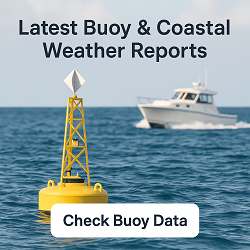Grant Town, WV Weather Forecast and Current Conditions (26574)
Current Conditions From Nearby Local Station

Feels Like 48°F
at
Current Conditions From Nearby Local Station

Feels Like 48°F
at
Point Forecast at a Glance







7-Day Temperature Trend
Week Ahead Summary
High temperatures remain relatively stable through the week, ranging from 52°F to 59°F. Some rain possible with at least 3 days showing precipitation chances of 20% or higher.
Climate Context
This week's forecast shows temperatures running 10°F below the historical average for October. Normal highs for this period are around 65°F with lows around 42°F.
This Date in Weather History
1988 - A "nor'easter" swept across the coast of New England. Winds gusted to 75 mph, and large waves and high tides caused extensive shoreline flooding. A heavy wet snow blanketed much of eastern New York State, with a foot of snow reported in Lewis County.
More on this and other weather history
Grant Town 7 Day Weather Forecast Details
Wednesday Oct 22

Night: A chance of rain showers. Mostly cloudy, with a low around 40. Southwest wind 6 to 10 mph, with gusts as high as 22 mph.
Thursday Oct 23

Day: A chance of rain showers. Mostly cloudy, with a high near 52. West wind around 14 mph. Chance of precipitation is 20%.

Night: A chance of rain showers before 7pm, then patchy frost. Partly cloudy, with a low around 36. Southwest wind 2 to 10 mph.
Friday Oct 24

Day: Patchy frost before 7am, then a chance of rain showers and patchy frost between 7am and 9am. Partly sunny, with a high near 53. West wind 3 to 10 mph.

Night: Patchy frost after 3am. Partly cloudy, with a low around 33. West wind 0 to 7 mph.
Saturday Oct 25

Day: Areas of frost before 9am. Mostly sunny, with a high near 56.

Night: Areas of frost after 2am. Partly cloudy, with a low around 34.
Sunday Oct 26

Day: Areas of frost before 9am. Mostly sunny, with a high near 59.

Night: Mostly cloudy, with a low around 38.
Monday Oct 27

Day: Partly sunny, with a high near 57.

Night: A slight chance of rain showers after 8pm. Mostly cloudy, with a low around 39.
Tuesday Oct 28

Day: A chance of rain showers. Mostly cloudy, with a high near 56. Chance of precipitation is 30%.

Night: A chance of rain showers. Mostly cloudy, with a low around 41. Chance of precipitation is 50%.
Wednesday Oct 29

Day: Rain showers likely. Mostly cloudy, with a high near 55.
Sun & Moon Monthly
Sunrise 7:39 AM
Sunset 6:33 PM
Last Light 7:00 PM
Moonset 6:48 PM

Contiguous United States Extremes
Wed's High Temperature
97 at 7 Miles East-southeast Of Hidalgo, TX and 2 Miles North-northeast Of La Puerto, TX
Wed's Low Temperature
13 at 32 Miles West-southwest Of Bynum, MT
Weather Folklore
Campfires smoke more before a rain.
Current subscribers - login to your ClearSky account
About Grant Town, West Virginia
Grant Town is a town in Marion County, West Virginia, in the eastern United States. The population was 690 at the 2020 census.
The town was formed in 1901 with the opening of the Federal Coal and Coke Company bituminous coal mine, and was named for Robert Grant, vice president of the coal company. The "Federal No. 1" mine remained open for the next 84 years until its closure in 1985. At one point it was the largest underground coal mine in the world in terms of gross production, mining the Pittsburgh coal seam. The town was incorporated as a municipality in 1946.
Grant Town is the site of an 80 Megawatt electrical generation facility, located adjacent to the coal refuse areas above the town. The plant, which was built in the early 1990s is controlled by Edison International and generates electricity using a fluidized bed combustion boiler process burning waste coal.
Grant Town is the location of a number of the stories of the West Virginia ghost story anthology The Telltale Lilac Bush, by Fairmont State University professor Ruth Ann Musick. The town, the mine and surrounding farms are prominently featured in a number of the stories. Musick includes a description of the town, circa 1965, in an introduction to a section on mine ghost stories:
"The Grant Town Mine, the scene of four of the stories here, is one of the largest in the United States, and possibly in the world. The town itself, with a population of a little over a thousand, is about seven miles northwest of Fairmont. Surrounded by hills, it is a kind of a sunken garden--a well at the bottom of the stairway of hills and highways--so that it seems to be in a world of its own. In a way, perhaps, it is. At least fourteen different European nationalities live in the town and work in the mine."
Content from Wikipedia, licensed under CC BY-SA 3.0.
How We Provide Better Local Weather
Current conditions: We use the nearest available station to your location - including professional MESONET/MADIS and local weather stations - often miles closer than regional airports.
Forecasts: National Weather Service point forecasts predict for your specific area, not broad regional zones, making them far more relevant to your location.

